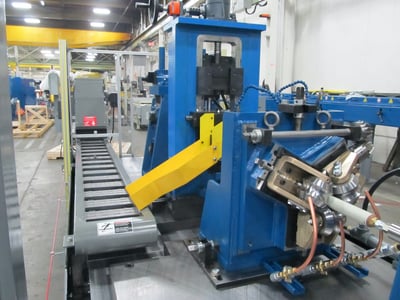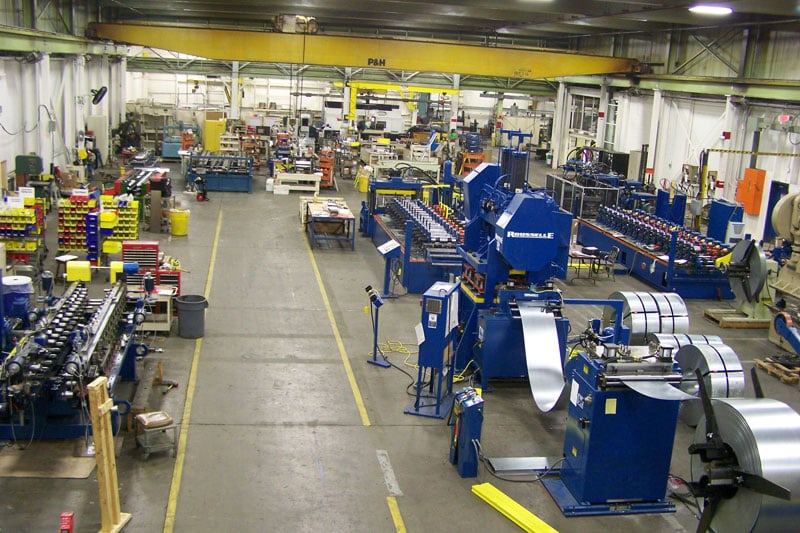When it comes to improving the productivity and efficiency of your roll forming operations, another important machine component to look for is the shear end welder. The shear end welder takes the place of the operator manually re-feeding or rethreading the roll form line. With a shear end welder, welding the coil ends together can be done in less than five minutes on many lines. In this post, we'll discuss the benefits of using a shear end welder in your roll forming operation.
How Shear End Welders Improve Roll Forming Efficiency
Since the welding process is completely automated, trained operators are not required for this specific function. Depending on the machine’s other functions, the entire process may be automated as well. A shear end welder has the ability to weld narrow to wide coil width with thicknesses from .005”-.500” depending on the welder model.
 In terms of productivity, the shear end welder allows for the operator to connect the tail of one coil to the lead of the new coil. This provides the opportunity to create a continuous coil. The technology reduces the adjustments needed between coils, decreasing downtime. The amount of scrap between coil changes is also greatly reduced, leading to material savings and increased profitability for your shop. The process can be totally automated or only the welding can be automated, providing flexibility for your specific setup and machine systems.
In terms of productivity, the shear end welder allows for the operator to connect the tail of one coil to the lead of the new coil. This provides the opportunity to create a continuous coil. The technology reduces the adjustments needed between coils, decreasing downtime. The amount of scrap between coil changes is also greatly reduced, leading to material savings and increased profitability for your shop. The process can be totally automated or only the welding can be automated, providing flexibility for your specific setup and machine systems.
The quality of products is also improved with the use of a shear end welder. Overall, a shear end welder reduces changes to settings on the roll forming line by 70% or more. Because fewer adjustments and coil changes are necessary, the risk of damaging the roll tooling is greatly decreased.
Finally, operator safety is greatly impacted by the implementation of a shear end welder. Operators do not have to manually feed the roll former by hand to start a new coil, limited contact with the machine and therefore reducing the risk of injury to the operator. At the same time, the operator no longer had to pull material out of the roll former or cut material in the roll former, which not only saves time but also makes the process less physically demanding.



